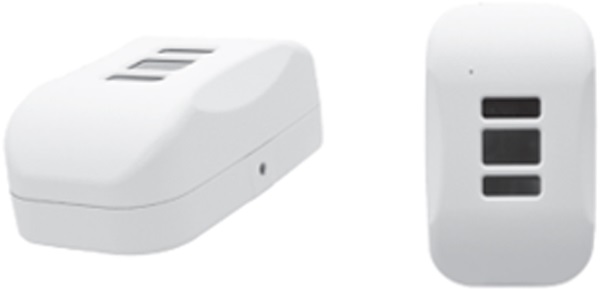Hospitals and nursing homes are increasingly using technology. For example, various technologies are being introduced in many fields, such as health management using sensing technology, telemedicine and communication support using Information and Communication Technology (ICT), and entertainment provision. These technologies additionally contribute to improving the quality of life (QOL) of people using these facilities and reducing the workload of staff who are working there. Here, we introduce Time of Flight image sensors (ToF sensors) that is already in use in nursing homes.
About LILIN
LILIN, founded in 1980 in Taiwan, is one of the world's leading manufacturers of IP video security cameras. The company designs, develops, manufactures, and markets a wide range of network cameras, providing total solutions for people's safety and security in various places such as offices, schools, banks, entertainment venues, and factories.
Challenges
Balancing safety and privacy consideration with camera monitoring
In many nursing homes, a limited number of facility staff watch over and care for multiple residents 24 hours a day. At such sites, by installing security cameras in each room and hallway, it is possible to check the status of residents all at once and in real time through tablets and PCs. One challenge with this camera-based monitoring, however, is concern about privacy invasion. Elderly people in particular may be reluctant to be captured on camera; they may feel unable to move freely and may experience stress.
Solution
LILIN has solved the problem of resident privacy by installing a ToF sensor in the monitoring camera instead of a standard image sensor. The ToF sensors acquire the distance information of the subject, and capture the posture and movement of the person, but they don't capture any images that are sensitive to privacy. For example, these images do not show a person's facial expression but rather display the person as a silhouette image. Compared to standard image information, this time-of-flight information can be used to more accurately ascertain the person's position, posture, and movements. And by combining this distance information with AI, it is possible to monitor the status of residents in real time. For example, this type of system can automatically detect unusual or risky behaviors, such as when a resident changes his/her position or leaves the bed; it can also determine how urgently the resident may need help. In addition, since the ToF sensor measures distance by receiving the reflected infrared light emitted by the camera, this enables stable detection even in dark environments such as at night or at bedtime.
Focusing on these benefits of the ToF sensors, LILIN provides a solution that combines distance information data and AI to detect and prevent unexpected accidents and abnormalities in advance while respecting privacy. When this solution was trialed in nursing homes and hospitals, early detection of abnormal behavior in residents was found to reduce bed fall accidents by about 40%. Verification results showed that this not only ensured the safety of residents but also, for facility staff, reduced their burden of monitoring duties and improved the efficiency of their care by more than 30%.
The camera provided by LILIN is equipped with an oToBrite camera module using Sony's IMX570 ToF sensor (Type 1/4.5, approximately 0.3 megapixels). This sensor has a high-sensitivity, low-noise back-illuminated structure, and uses high-speed pixel technology such as multi-layer wiring. Improving light collection efficiency and enabling high-speed processing for distance measurement achieves accurate and stable ranging performance.
When commercializing the monitoring camera, LILIN adopted Sony's ToF sensors for their high accuracy and less uneven ranging performance compared to other companies' products.
Sony's technology contributes to LILIN's goal of improving the quality of life and safety of care recipients.
Differences in images of people in the patient's room

Image of camera with ToF sensor(DS362)
(Based on distance information of the person, the posture/movement is grasped. Privacy consideration with silhouette image.)

RGB camera image
(This can catch people's facial expressions, leading to concerns about privacy.)

LILIN's camera equipped with Sony's ToF sensor: DS362

